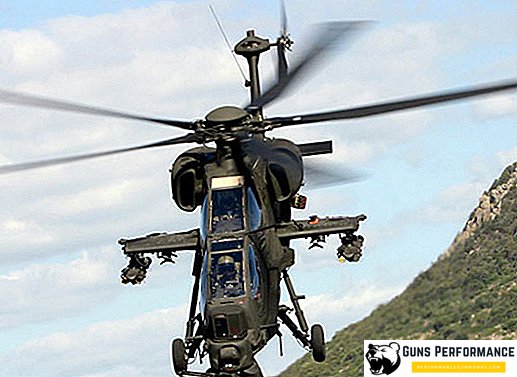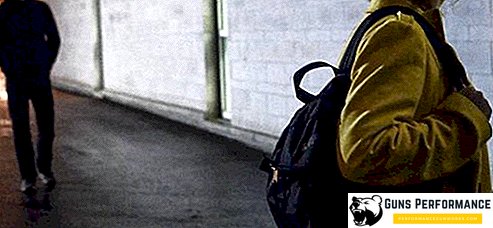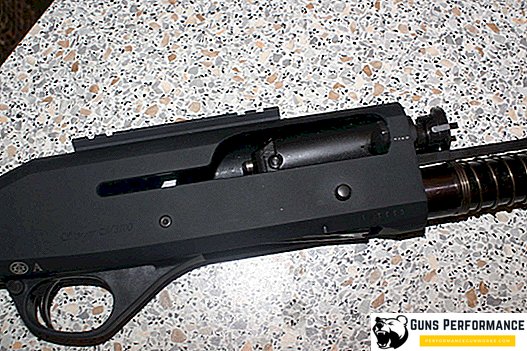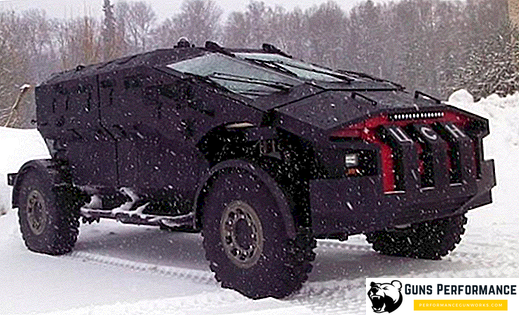
The twentieth century was not only an era of rapid technological growth and the greatest scientific discoveries, it also "presented" humanity with absolutely new threats, some of which may well put a bold end to the history of our civilization. The most realistic of them, of course, is a weapon of mass destruction, which is fully capable of sending our biological species into oblivion after dinosaurs or mammoths.
Weapons of mass destruction (WMD) is a definition that combines several different types of weapons in their action, each of which is capable of leading to mass death of people. And in this case the term "mass" is interpreted very widely: from a few thousand to many millions of the dead. Currently, only nuclear, chemical, and biological weapons are classified as weapons of mass destruction. However, science does not stand still: scientists from different countries of the world without rest are developing a new weapon of mass destruction, which in its murderous qualities may well surpass the existing one.
The first large-scale use of weapons of mass destruction occurred during World War I - on April 22, 1915, the Germans conducted the famous chlorine attack near Ypres. The “abilities” of the new weapon impressed the military so much that in just a few months the conflict turned into a real chemical war. Used OB and the Russian army.
Much louder turned out "benefit performance" of another type of weapons of mass destruction - the nuclear bomb. In August 1945, the Americans dropped similar munitions on the Japanese cities of Hiroshima and Nagasaki. As a result of these attacks, about 200 thousand people died ... This event was included in all historical books, dictionaries and encyclopedias.
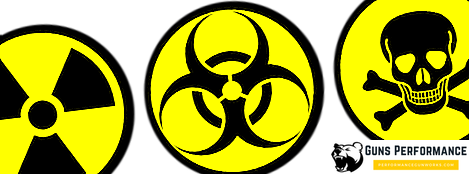
The third type of weapons of mass destruction, biological weapons, fortunately, was never used on a large scale during hostilities, although attempts at its limited use had been made.
Improvement of weapons of mass destruction occurs in our days. New types of combat gases and pathogens are being developed, more powerful and effective means of delivering nuclear weapons are being created. It is possible that in the near future new types of weapons of mass destruction will arise, the basis of which will be based on other physical principles. In parallel with the work on the development of weapons of mass destruction, various states are conducting serious research aimed at protecting against weapons of mass destruction - new vaccines are being synthesized, more effective personal protective equipment (PPE), etc. are being adopted.
What is a weapon of mass destruction?
The classification of weapons of mass destruction that exists today is quite simple; weapons of mass destruction are divided into three types:
- nuclear (thermonuclear);
- chemical;
- biological.
In turn, nuclear weapons (NW) is divided into:
- Nuclear explosive devices that exclusively use the energy of nuclear fission of plutonium or uranium.
- Thermonuclear explosive devices, in which the bulk of the energy arises as a result of nuclear fusion reactions.
At present, the overwhelming majority of the existing charges of nuclear weapons operate on the basis of fusion reactions, that is, they belong to thermonuclear weapons. Also, nuclear weapons can be divided by power, from ultra-small (up to 1 Kt) to super-large (over 1 Mt). Separately, mention should be made of nuclear weapons, in which one of the damaging factors significantly prevails over the others. For example, a cobalt bomb gives the greatest possible contamination of the terrain, and penetrating radiation is the main striking factor of a neutron bomb.
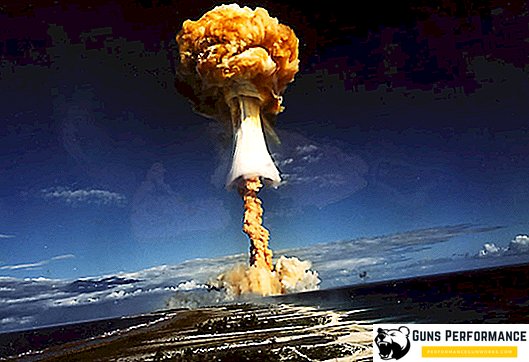
The classification of chemical weapons is based on the physiological effects it has on the human body. This is the most important characteristic of weapons of mass destruction of this type. Given her, combat gases are:
- Neuroparalytic action (sarin, soman, tabun and V-gases);
- Blistering effect (mustard gas, lewisite);
- Generally valid (chlorocyan, hydrocyanic acid);
- Suffocating action (phosgene);
- Psychochemical action;
- Irritant effect (chloropicrin, adamsin).
Depending on the degree of impact of weapons of mass destruction, toxic substances are divided into lethal and those that disable a person temporarily. Although, this separation is somewhat arbitrary. There are also classifications of agents based on their durability and rate of human exposure.
Biological or bacteriological weapons of mass destruction are classified according to the types of pathogenic organisms, as well as methods of its use.
Nuclear weapons and their main striking factors
The most powerful type of weapons of mass destruction is undoubtedly nuclear weapons. Almost immediately after its appearance, it became the most important strategic factor, which it remains to this day. The power of a nuclear weapon is capable of demolishing huge megacities and in a matter of seconds killing millions of people, and the radiation generated in the process of an explosion can infect vast territories for many years. Currently, only a few states in the world have in their arsenals this means of mass destruction, the United States and Russia have the largest number of nuclear charges.
The following are the main striking factors of a nuclear weapon:
- light emission;
- shock wave;
- penetrating radiation;
- electromagnetic pulse;
- long-term contamination of the area by radiation.
Of all the energy of a nuclear explosion, 50% is spent on the shock wave, 35% goes on light radiation, 10% on radioactive contamination and 5% on penetrating radiation. This must be taken into account when creating shelters from the effects of this type of WMD.
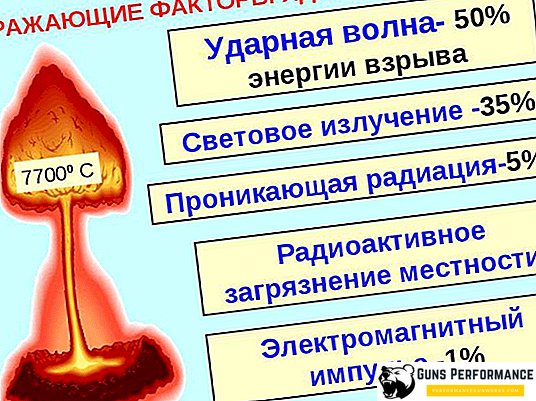
The shock wave is the main damaging factor of nuclear weapons. It represents the front of extremely compressed air, which spreads in all directions from the epicenter of the explosion at supersonic speeds.
Light radiation is a flow of energy that instantaneously spreads after an explosion, but acts fairly briefly. Radiation burns or ignites all combustible materials, causes burns, affects the organs of vision of people and animals. The intensity of light radiation decreases with distance from the epicenter of the explosion. You should also be aware that any opaque materials that give shade are an obstacle to this damage factor.
Penetrating radiation is a stream of hard radiation, mainly consisting of neutrons and gamma rays. Its impact is also short - 10-15 seconds after the explosion. However, this time may be enough to lose health and "pick up" radiation sickness. Well shields penetrating radiation, steel and concrete, earth and wood make it somewhat worse.
Another serious threat of nuclear weapons of mass destruction is radioactive contamination of the terrain. It occurs due to nuclear reaction products, as well as the impact of an explosion on objects and materials that were in the epicenter. At the time of a nuclear explosion, a cloud saturated with radioactive elements is usually formed, which can be carried by the wind for tens of kilometers. This damage factor carries the greatest danger in the first hours and days after the use of nuclear weapons, then it decreases somewhat.
Another striking factor of nuclear weapons is a powerful electromagnetic pulse arising at the time of the explosion. It disables electronic equipment and disrupts communication.
Ways to protect against nuclear weapons
Is it possible to protect against weapons of mass destruction (ZOMP) of this type? It should be understood that if you find yourself close to the epicenter of a powerful nuclear explosion, then no protection or shelter will save you. If the distance is significant, then using various methods of protection, you will be able not only to stay alive, but also significantly reduce the harmful effects of damaging factors on your body.
Back in Soviet times, a high-power thermonuclear strike (from 2 to 10 megatons) was modeled in the center of Moscow. In the epicenter of the explosion, a sphere of fire with a diameter of 1.5-2 km will arise, which will cover the area of the Boulevard Ring - the Kremlin - Polyanka. Everything that is there, instantly turn into a plasma. Light and heat radiation will incinerate all the organic matter at a distance of 3-4 km from the epicenter, the temperature will rise to tens of thousands of degrees in the radius of the Garden Ring and almost everything will be burning there, from asphalt to brick and concrete walls. Within a radius of 25 km, all combustible materials and structures aimed at the explosion will flare up; a large-scale and massive fire will engulf the entire city up to the MKAD. The shock wave will transform the entire center in the radius of the Garden Ring into a leveled landscape dotted with crushed burning debris. All ground structures will be destroyed further, and the backward shock wave caused by the burning out of oxygen at the epicenter will lead to the so-called fire storm effect. Within the Moscow Ring Road, the city will be a flattened surface, covered with burning coals and a sintered glassy mass. Neither the bomb shelter, the subway, nor other underground communications will help the Muscovites - all this will inevitably be inundated ... Large-scale fires will last at least several days, not allowing rescue work to begin. The creators of this model came to the conclusion that rescuing someone is advisable at a distance of at least 5-10 km from the Moscow Ring Road.
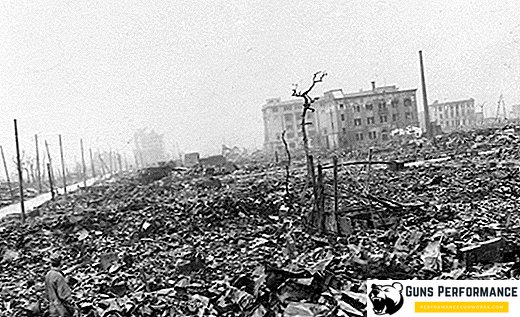
If the distance from the epicenter of the explosion is still great, then you can save your life by hiding in a shelter. Usually this is an underground room, which saves mainly from penetrating radiation and radioactive fallout. In addition, individual protection against weapons of mass destruction of this type is used, as a rule, these are gas masks and special suits. They are effective against radioactive dust and precipitation.
Chemical weapons and its main features
Developments in the field of toxic gases began actively in the last third of the XIX century. Even before the large-scale use of this weapons of mass destruction, it was prohibited by international conventions, as inhuman and inhuman. However, it absolutely did not stop anyone. As mentioned above, for the first time combat gases were used during the First World War, very soon all parties to the conflict began to use these weapons.
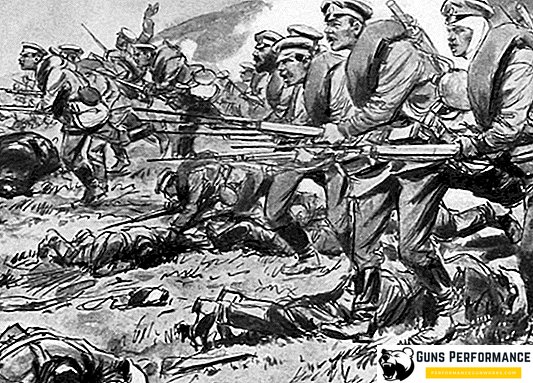
After the end of the PRC, work on chemical weapons was continued, and at the same time, protection against weapons of mass destruction of this type was improved. Fortunately for mankind, combat gases were never used on a large scale. During the Great Patriotic War, the Nazis used poisonous substances (OM) to kill defenseless prisoners of concentration camps.
Currently, the most deadly chemical weapons are nerve gases, which were first synthesized in Germany in the mid 30s. Why Hitler did not apply this OB against his opponents is still a mystery.
It should be understood that modern types of these weapons of mass destruction of poisonous substances are much worse than their analogues of a century ago. Nerve gases can affect the human body not only through the respiratory organs, but also simply by falling on the skin. Moreover, the toxicity of these substances is simply monstrous.
Opening a tube with nerve gas soman literally for a few seconds and holding your breath, you still die. You will kill a couple of agents that have entered the body through the skin.
It should be noted that soman was synthesized as early as the 40s of the last century. Since then, chemists have been able to create more deadly gases. Immediately after the war, VX-gases, which today are considered to be one of the most toxic substances on the planet, were discovered by specialists of private Western companies. They are several hundred times more toxic than phosgene.
Currently, there are several types of delivery of chemical weapons to the point of use. Most often poisonous substances ammunition: artillery shells, missiles or bombs. It is also possible to spray agents from special aviation containers.
Protection against chemical weapons of mass destruction
Since the first use of chemical weapons, work has continuously been done on ways to protect against them. And I must say that noticeable results have been achieved in this area. The most famous and common method of protection against agents is the use of gas masks. The first samples of such devices appeared in the XIX century, they were used in hazardous industries and in extinguishing fires. However, gas masks got really widespread already during the First World War. Through numerous trial and error, an optimal design of this protective agent has been developed, which has not fundamentally changed to this day. Currently, there are dozens of models of gas masks designed for military personnel, civilians, children, etc.
With the advent of toxic substances that can penetrate the human body through the skin, in addition to the gas mask, various protective suits have been used.
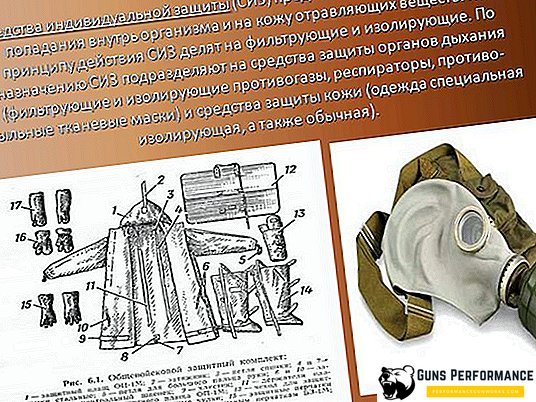
The complex of protective equipment also includes a variety of systems for determining agents in the environment, as well as antidotes that are injected into the body of victims of chemical attack. Moreover, these elements of protection are no less important than the reliability of a gas mask - many of modern gases have practically no color and smell, so it is very difficult to detect deadly danger without special devices. No less important are antidotes: if an antidote is administered at the first signs of poisoning, then it is quite possible for a person to save a life.
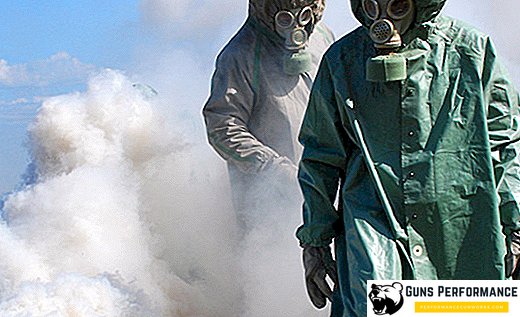
In general, we can say that in our time, chemical weapons are gradually losing their relevance. There are several reasons for this:
- Non-selectivity Chemical weapons are very unpredictable, their use is extremely difficult to control. This process is strongly influenced by meteorological factors: wind direction and speed, temperature, humidity, and precipitation. Using chemical weapons, one cannot be sure that the civilian population will not suffer - the gas does not "become personal" and kills everyone. The recent Syrian events are a clear confirmation of this;
- Low efficiency For more than half a century the generals were preparing for a chemical war, so the army is protected from toxic agents quite reliably. Each soldier has a chemical protection kit, military equipment is equipped with filtering installations. The composition of any armed forces include chemical defense troops. So the military especially gas can not hurt. What really makes agents really ideal is the genocide of the civilian population, but such actions in the modern world usually have very serious consequences for their organizers;
- Problems with production and storage. Explosions in warehouses with conventional ammunition is a serious man-made disaster, fraught with numerous casualties and great destruction. It is terrible to even imagine what will happen if projectiles filled with, for example, sarin begin to explode. Storage of chemical weapons is very expensive, the same can be said about its production.
However, it is still too early to write off chemical weapons in a museum. Many third-world countries that cannot afford nuclear weapons are engaged in development in this area. An even greater danger is the possibility of agents falling into the hands of terrorists. Making this type of weapons of mass destruction in our Internet age is quite simple, but the consequences of a terrorist attack using it in a peaceful city can be terrible.
Biological weapons and features of its use
Biological weapons use pathogenic pathogens of various diseases for the mass destruction of enemy personnel, its population, agricultural plants and animals. Humanity has suffered from various epidemics since ancient times, and the military have long dreamed of using disease as a weapon. However, this was only possible in the last century.

This type of weapons of mass destruction consists of the pathogenic organisms themselves and their means of delivery, which can be shells, missiles, bombs, mines, and air containers. The spread of pathogens can be carried out with the help of infected rodents or insects. The pathogens of plague, cholera, Ebola, anthrax, typhoid, influenza, malaria, and smallpox are used as pathogens.
О возможном использовании биологического оружия задумывались англичане во время Второй мировой войны, в тот же период японцы применяли его в Монголии и Китае. Есть неподтвержденная информация об использовании биологического оружия американцами в Корейской войне. В Советском Союзе в 1979 году произошла утечка сибирской язвы из секретной лаборатории, в результате чего умерло более 60 человек.
Средства защиты от биологического оружия массового поражения можно разделить на несколько групп. В первую очередь, это, конечно, все те же противогазы и защитные костюмы - то есть, индивидуальные средства защиты. Также очень важна вакцинация населения. В очаге заражения проводится комплекс санитарно-гигиенических и противоэпидемических мероприятий, включая карантин, санитарную обработку и дезинфекцию.
Главный недостаток биологического оружия - это его неизбирательность. Причем в этом оно значительно превосходит химическое. Можно организовать эпидемию в тылу врага, но как потом ее контролировать? А в современном глобализированном мире вероятность того, что в считаные дин возбудитель чумы или сибирской язвы окажется на вашей собственной территории, очень высока. Тем более что биологическое оружие в первую очередь ударит по мирному населению, вооруженные силы довольно надежно защищены от него.
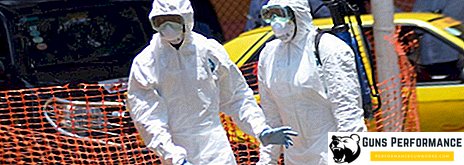
Вирусы и болезнетворные бактерии могут стать опаснейшим оружием в руках террористов. Американцы посчитали, что несколько сотен килограмм спор сибирской язвы, распыленной в крупном городе, могут стать причиной смерти сотен тысяч, а то и миллионов граждан в течение суток.



